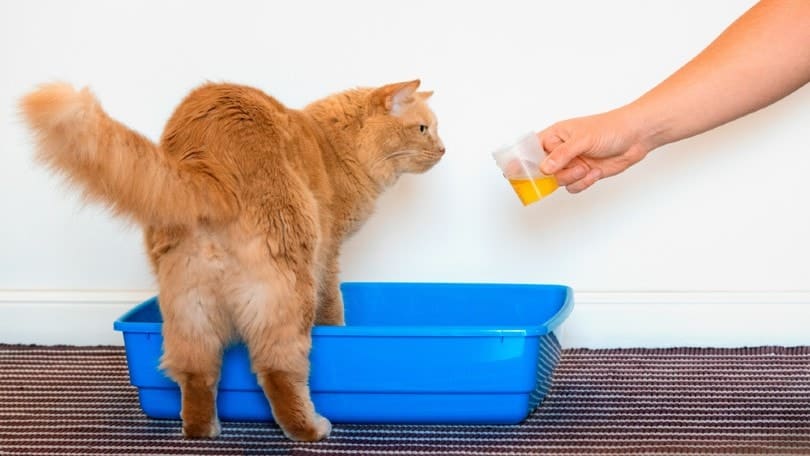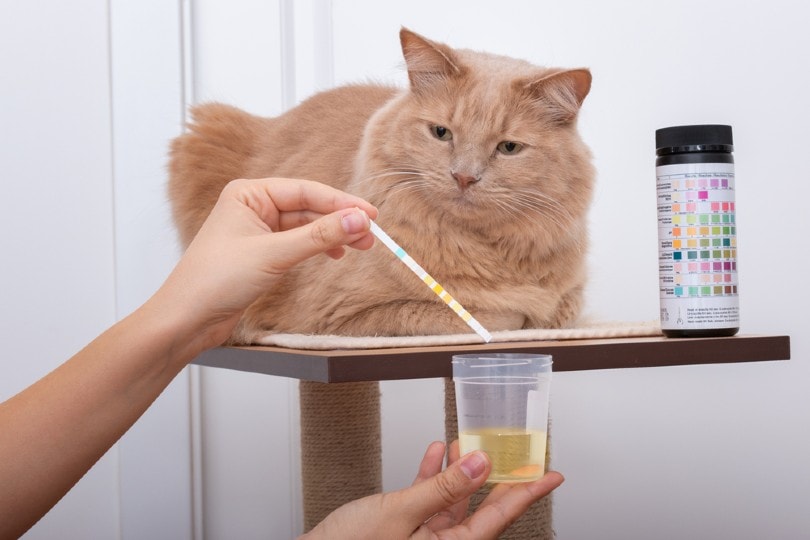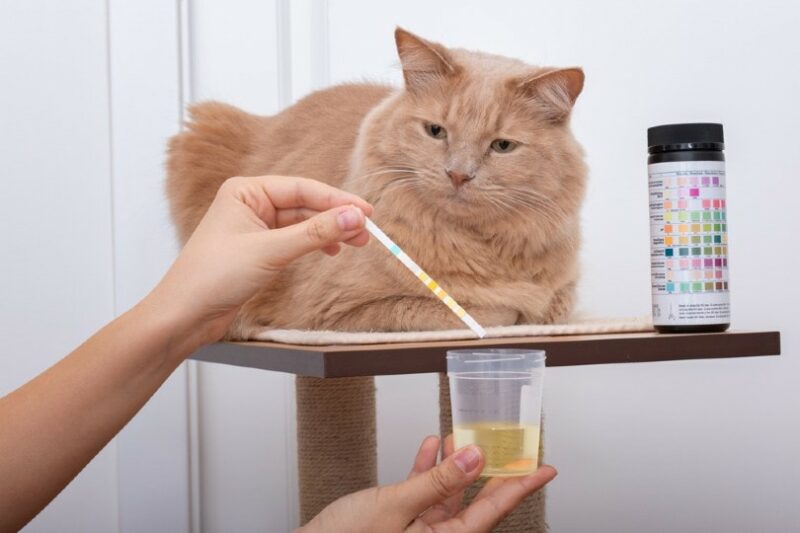A urine sample can help a veterinarian check for various conditions in a feline’s urinary tract and kidneys. If your vet has asked you to bring in a sample of urine from your cat, you might be feeling a bit bewildered as to how to actually get one. After all, how likely is your cat to cooperate if you attempt to hold a collection pot under them as they pee?
Although you might be imagining all sorts of bizarre or messy scenarios, obtaining a urine sample from a cat is actually not that difficult. The only potentially frustrating aspect of the procedure is waiting for your cat to actually use the bathroom! Read on for the easiest way to get a urine sample from a cat.
Before You Start
This is a simple procedure, but you do need a few pieces of equipment, and there are vital steps you should take and things to keep in mind. The most important thing is to thoroughly clean your cat’s litter box—this will encourage the cat to use the bathroom and get rid of any dirt or feces that may contaminate the urine.
If your cat does poop before urinating in the litter box you’ve cleaned for the purpose of urine collection, remove it and any surrounding litter to avoid contamination. Try your best to remove any traces of the cleaning products that you used, as these can also affect the sample.
How to Get a Urine Sample From a Cat
Most veterinarians will request a fresh sample. It must be in an appropriate sample pot and collected with a dropper or syringe. If your vet didn’t give you a sample pot, a clean jar can be a substitute, but you should double check with your vet.
- A sample pot/glass jam jar
- A dropper/syringe
- A clean, dry litterbox
- Non-absorbent cat litter/shredded magazine paper
- Gloves
- After thoroughly cleaning the litter box, fill it with a good helping of non-absorbent litter. You should use non-absorbent litter to avoid the sample getting soaked up before you can collect it. If you don’t have any, you could use shredded paper from an old magazine.
- Wait for your cat to use the litter box. You may need to wait for a while—unfortunately, there aren’t many ways to encourage a cat to pee if they don’t want to. Just offer clean water or plenty of wet food throughout the day as usual, and wait it out.
- Once your cat has urinated, put on your gloves, and suck up some of the urine with the dropper.
- Empty the contents of the dropper into the container. Label the pot with your pet’s name and the time the sample was collected if your vet has provided you with a label to stick on.
- Take the sample to your vet as soon as possible. If you can’t take the sample immediately, put it in the refrigerator to keep it cool.
How Much Urine Is Needed for a Sample?
Not much. As a rule, around 1–2 ml should be sufficient, though in some cases, your vet may need a larger sample. This depends on whether the test will be done in-house or needs to be sent to a laboratory.

What If I Can’t Collect a Urine Sample?
If you’re unable to collect the sample for any reason, speak to your vet, and they’ll be able to advise you and help you out. Sometimes, a vet will invite you to leave your cat at the clinic for a day so the staff can collect the sample there. In some cases, vets will extract the sample from the bladder itself rather than doing so externally; this is called cystocentesis.
Why Does My Vet Need a Urine Sample?
- Glucose and protein levels
- The presence of blood
- Ketone levels
- Cancer cells
- Bacteria
- pH levels
- Bilirubin levels
- Urinary tract infections (UTIs)
- Cystitis
- Bladder stones or crystals
- Kidney function
- Diabetes
Final Thoughts
Getting a urine sample from a cat is pretty straightforward. Granted, your cat may make you wait a while for that sample, but apart from that, you should be able to collect it without too much stress. As long as you’ve got a spotless litter box, the right kind of litter, and a whole lot of patience, you’ll be just fine!
Remember, don’t worry if you’re having a really hard time collecting a sample—your vet is always there to help.
- Related Read: How to Tell If a Cat Has UTI (Urinary Tract Infection)?
Featured Image Credit: Yaya Photos, Shutterstock












